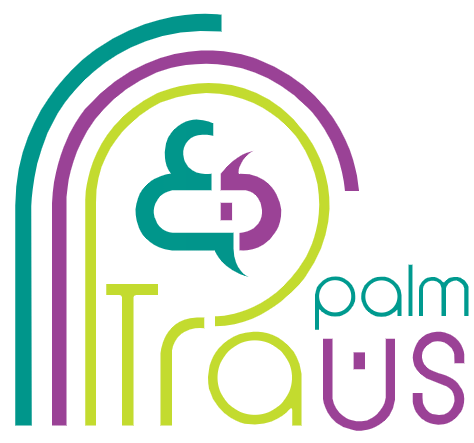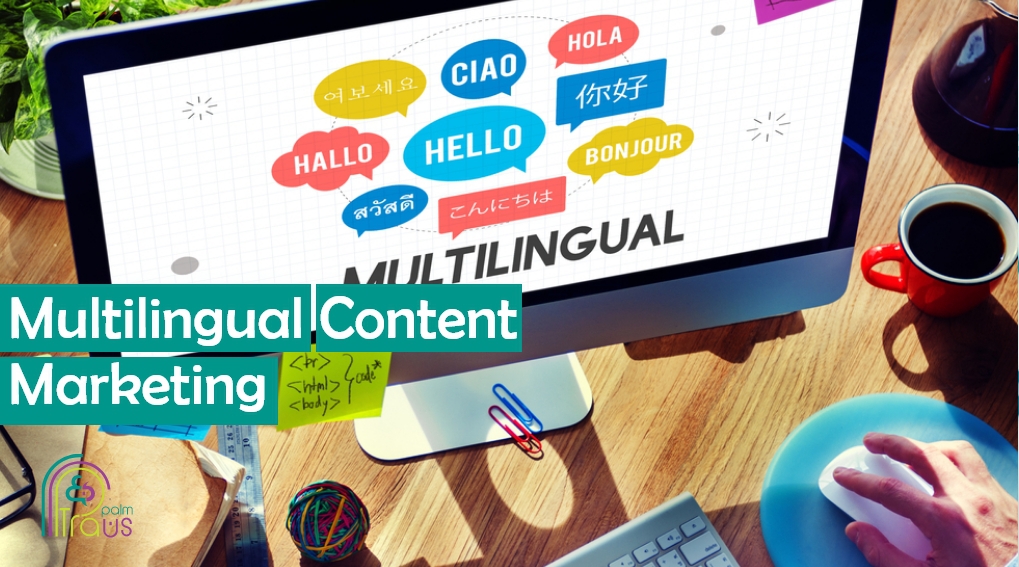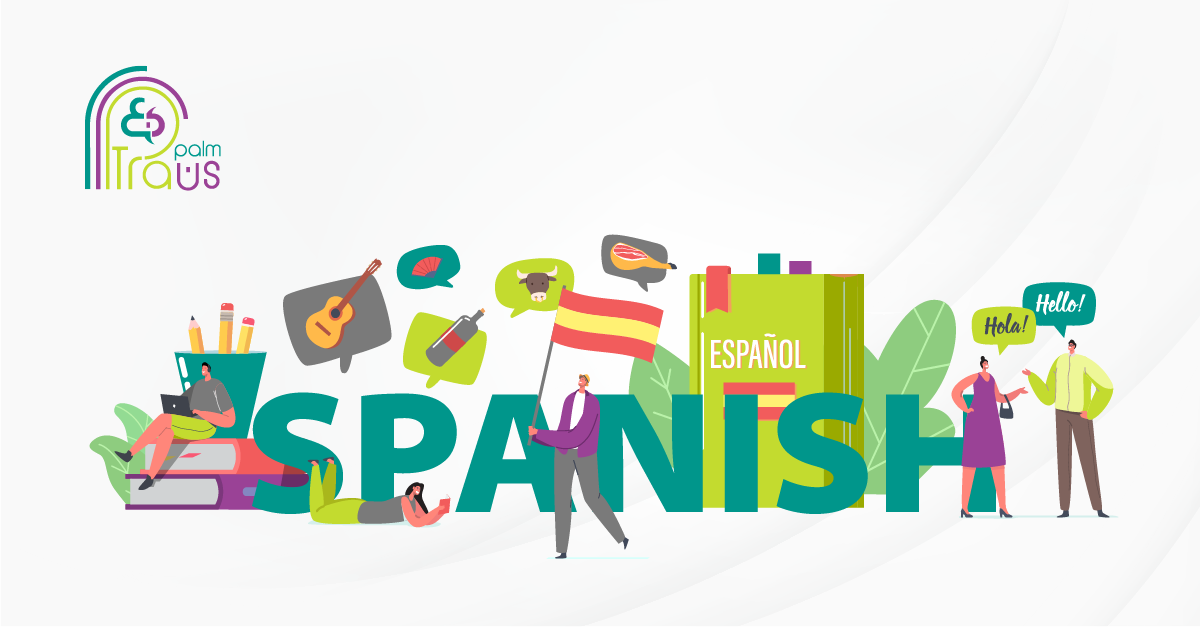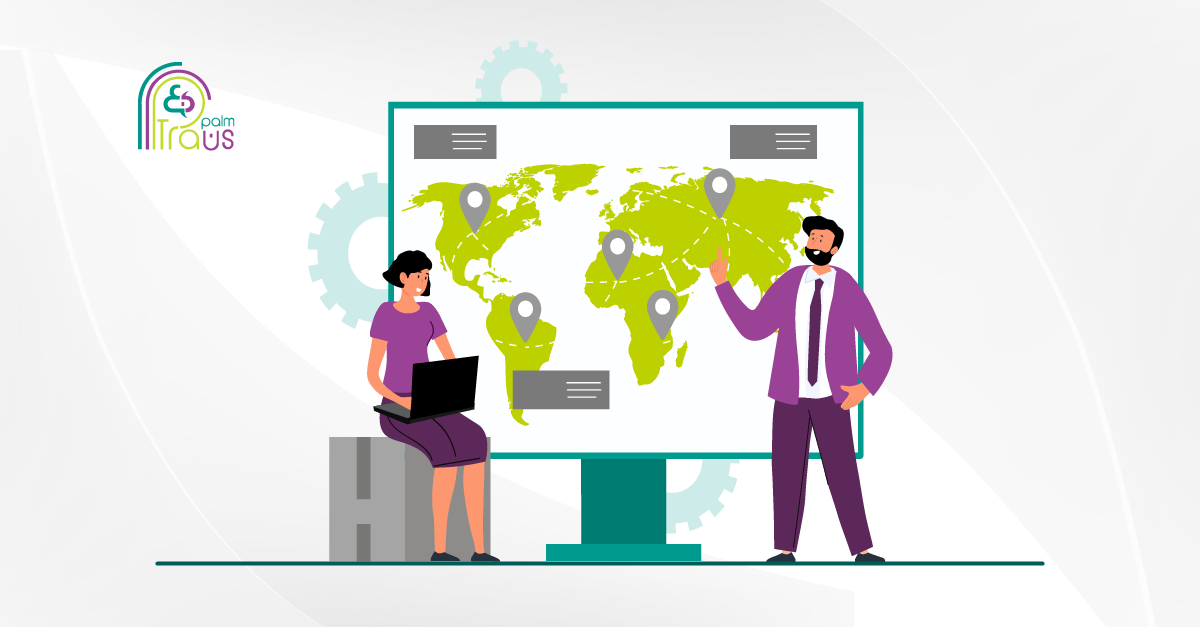Today, you can reach anyone, anywhere, and anytime!
Whether it’s helping you reach broader audiences and expand your potential customer base, or even maintaining effective communication with your international customers, multilingual content marketing is a sales growth booster that you can’t overlook.
But it isn’t just about translating your digital marketing content into the language of your target audience.
Multilingual content marketing is about creating highly targeted, relevant content and personalized experiences.
So, what is multilingual content marketing? How can it benefit your business’s expansion? And how do you choose the right language service provider to reach your marketing objectives?
Let’s embark on today’s journey and see what our blog entails.
What Is Multilingual Content Marketing?
If we are to define multilingual content marketing, then it’s a strategic approach to creating and distributing content that targets audiences speaking different languages.
In multilingual content marketing, a common practice is to have a source material, which serves as the original content created in one language. Then, this source material is translated and adapted into multiple target languages.
This source material can be any form of marketing content, such as website copy, blog posts, product descriptions, social media content, or advertising materials.
However, multilingual content marketing is a multifaceted approach that includes multiple aspects, implemented separately or combined.
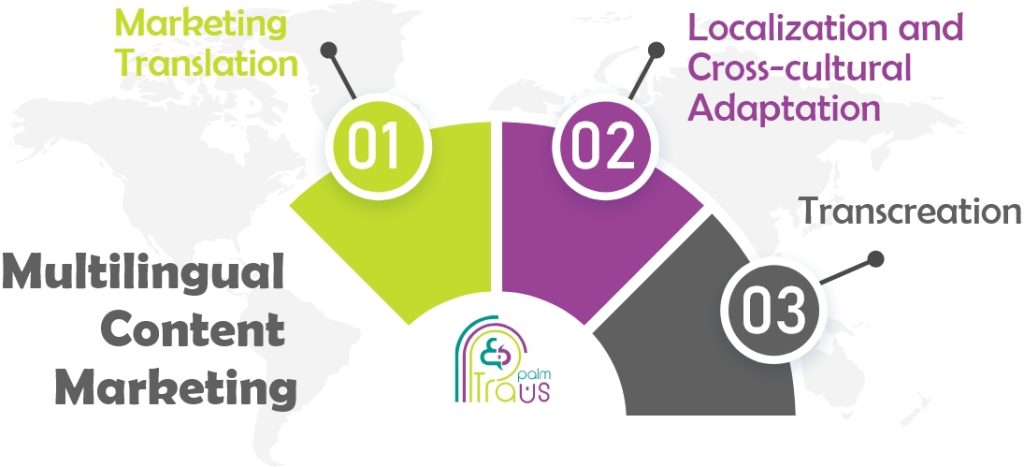
➤ 1. Marketing Translation
involves conveying the meaning of your marketing materials in a different language while preserving the original message, tone, and intent. This is usually a pretty straightforward process that’s most suitable to specific types of content such as product descriptions and FAQs.
➤ 2. Localization and Cross-cultural Adaptation
goes beyond word-for-word translation and involves adapting the content to suit the cultural contexts and regional preferences of the target audience.
This also goes beyond translating and adapting the textual content of your materials. It essentially adapts visuals, colors, symbols, and other visual elements to align with local culture.
➤ 3. Transcreation
is a creative translation or a more creative level of cultural adaptation that recreates and adapts marketing content in a way that captures the essence, style, and impact of the original message while resonating with the target audience.
Transcreation is best suited for slogans, taglines, ads, graphics, and imagery.
Unlike translation and localization, transcreation is a process that may not always require a specific source material. It is often informed by the marketing concept or creative brief. It may then involve brainstorming, ideation, and collaboration between transcreators, marketers, and language professionals to develop effective and culturally resonant content.
The aim is to provide accurate multilingual content that evokes the desired emotional response from the audience while upholding your brand voice, messaging, and identity.
With a multilingual content marketing strategy, you scale your business globally, expanding your business reach, increasing your products and services accessibility, and building stronger connections with audiences from different backgrounds.
The Power of Multilingual Content Marketing For Businesses
Businesses thrive and grow internationally through multilingual content marketing. It is a powerful strategy that serves as a catalyst for business expansion.
You create compelling marketing content in multiple languages, you overcome language barriers, and accordingly, you can effectively reach and engage with diverse international audiences and establish a strong presence in international markets.
It makes sense!
Here are some of the advantages of multilingual content marketing.
➤ 1. Boosting Reach and Engagement
People crave content in their own languages.
Here are the numbers. According to the CSA survey,

If your content marketing can bridge these language gaps and consumers’ preferences, your audience is more likely to find your content, understand it, engage with it, and ultimately buy your products and services.
With your multilingual content marketing, you increase your brand visibility and awareness, which can lead to better brand engagement and more opportunities for conversion.
➤ 2. Increasing the Brand’s Trust and Credibility
People crave hyper-personalized experiences.
In a recent survey by Harvard Business Review, 56.2% of consumers said that being able to access information in their language is more important than price.
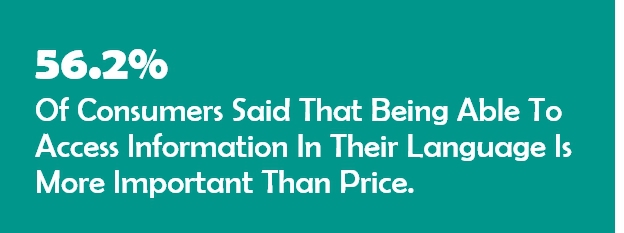
Language is evidently more important than price in your target user’s journey.
However, they are more likely to engage with content that doesn’t only communicate in their own language but speaks to them on a personal level – which breeds trust in your brand.
Multilingual content allows you to tailor your messaging to each audience, addressing their unique preferences, behaviors, and values and peppering your communications with local trends and pop culture.
This personalized experience demonstrates a commitment to understanding and serving the needs of your international customers. It builds trust, fosters customer loyalty, and establishes strong meaningful relationships with your audience.
➤ 3. Improving SEO Ranking and Visibility
Regions and languages come with their own distinct search behaviors and keyword preferences. And multilingual content marketing can leverage these behaviors and preferences in your favor. It translates and adapts keywords and SEO elements such as meta descriptions and integrates them into your translated content.
This ensures that your multilingual content is optimized for search engines in each target language and improves its visibility and discoverability for international audiences.
➤ 4. Gaining a Competitive Edge
One of the great benefits of creating multilingual content is that it gives you a definite competitive advantage in the fierce competition of the global market. In markets where competitors might not have yet adopted multilingual strategies, your efforts can give you an edge in establishing a strong presence.
➤ 5. Leveraging Cost-Efficient Marketing
According to marketing advisory firm DemandMetric, content marketing costs 62% less than other traditional types of marketing and generates approximately three times as many leads!
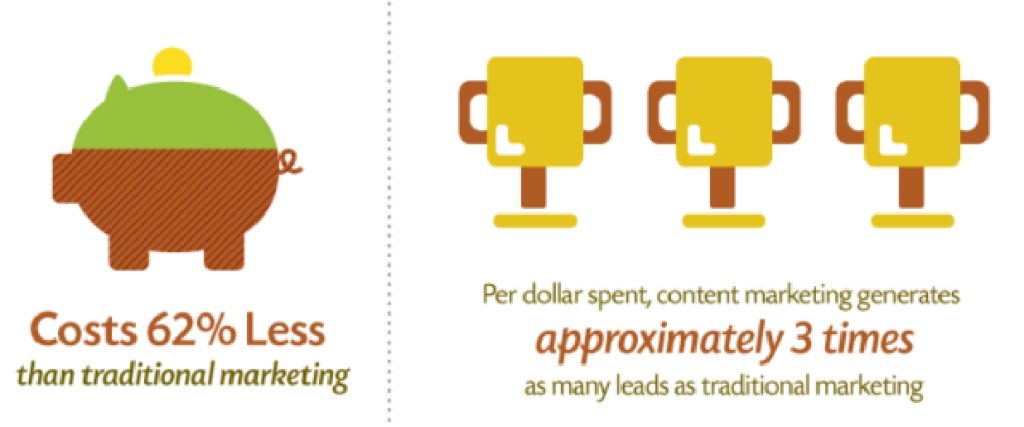
Imagine applying this to multilingual content marketing, where you reach more audiences across different cultures and regions. How much would this likely benefit your business?
➤ 6. Maximizing Sales and Revenues
When visitors land on your website and engage with your marketing content in their preferred language, they can easily find the information they are looking for and navigate the website. It streamlines their experience from the search engine to the shopping cart. This reduces frustration and encourages them to stay longer and explore further.
The longer users stay on your site, the lower the bounce rate and the higher the chances of them converting into customers.
This directly reflects on your sales and revenue. A tailored multilingual content marketing strategy helps businesses increase sales, expand their market share, and diversify their revenue streams, eventually leading to long-term sustainability and profitability.
A Checklist for Your Multilingual Content Marketing
This guide is the ultimate shortcut to multilingual content best practices for effective and engaging multilingual content.
Cultural Sensitivity in Multilingual Content Marketing
As much as marketing itself, multilingual content marketing seeks to persuade, evoke positive emotions and responses, and drive actions – but from people around the globe.
But in order for multilingual content marketing to do that, culture plays a significant role.
Culture shapes individuals’ beliefs, attitudes, and preferences, which influence their decision-making. And different cultures respond to various persuasive techniques and appeals differently. Culture also profoundly influences emotional experiences and expressions.
This is why an effective multilingual content marketing strategy starts with understanding the cultural nuances and perspectives of the target audience in question. Integrating and aligning with them can help you create content that resonates deeply, triggers positive emotions, and drives desired actions.
This genuine effort to connect with the audience on a deeper level is what persuades, affects their behavior, and builds a special bond with them, which in turn creates a foundation for ongoing customer engagement, repeat business, and positive word-of-mouth recommendations.
Take something as simple as color as a cultural-specific concept that has its impact on your user’s perception of your message and brand.
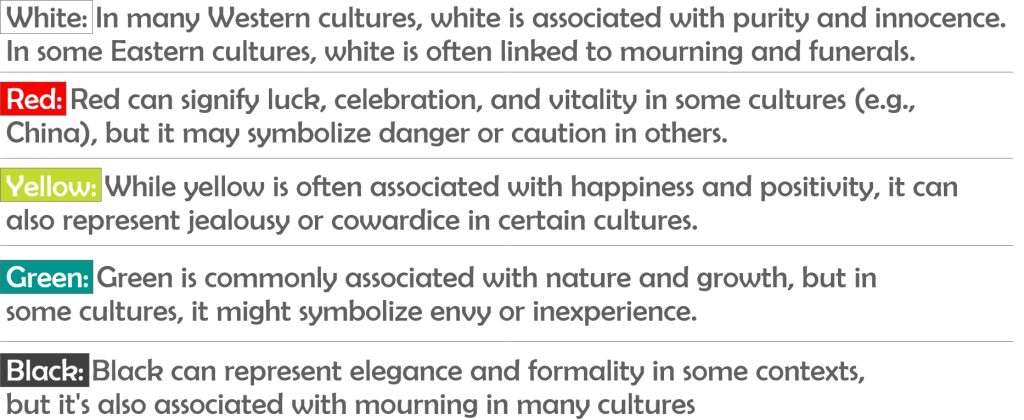
So, paying attention to cultural differences can significantly impact how your audience perceives your content, engages with it, and takes action.
Another example that demonstrates the power of culture in multilingual content marketing is what McDonald’s did with its latest campaign in the Middle East.
McDonald’s 2023 marketing campaign titled “Fancy a Mcdonald’s? #Raise Your Arches” was localized for the Middle East’s UAE. The campaign’s title was localized and transcreated into يلا ماكدونالدز؟
Is that it? Absolutely not.
McDonald’s took into account a pivotal cultural component that’s customer representation, something that’s also significant in the Middle Eastern culture, and integrated it into their Arabic marketing campaign.
The ad, which at first glance seems like a replica of the original ad, features local, relevant representations of customers in the Middle East, mainly through their cultural attire.
On the other hand, if you create culturally offensive or inappropriate content, you can lose your prospective customers. Even more concerning, you can find yourself entangled in legal issues and facing significant financial losses.
How to Choose the Best Language Service Provider for Your Multilingual Content Needs?
To enter the global market successfully and win your place ahead of your competitors, you must choose the right language service provider (LSP) to ensure you get the highest quality of your multilingual content.
To start with, you must ensure your LSP has a long track record in the market. Also, they must have large teams of native speakers of the language of your target market to understand the intricacies of the language, cultural nuances, and local idiomatic expressions. Not to mention, they use cutting-edge translation and content management tools to deliver higher-quality and more cost-effective solutions.
And as multilingual content marketing extends beyond translation, an LSP with expertise in international SEO can optimize your content for search engines in different languages, ensuring it ranks well in target markets and reaches your audience.
You can’t also overlook the importance of quality assurance processes. Your LSP must have a robust quality assurance process in place, including multiple rounds of review and editing. And a well-structured project management system that ensures timely delivery, efficient communication, and coordination among the team members and stakeholders.
Broaden Your Global Reach with TransPalm Comprehensive Multilingual Content Marketing Solutions
Looking to communicate with and impress audiences from every corner of the world?
TransPalm is a professional translation services provider that offers ISO-certified language solutions for your marketing efforts across diverse industries. Our marketing language solutions include translation, website and app localization, transcreation, and international SEO, and come in 120 languages.
With over 10 years in the field, TransPalm has completed thousands of projects of different languages, sizes, and complexity, consistently delivering the highest quality with the fastest turnarounds and affordable prices.
